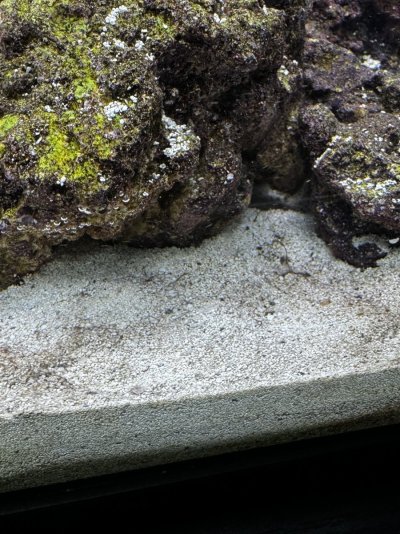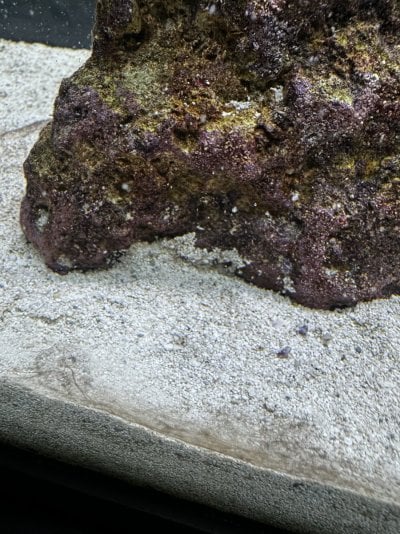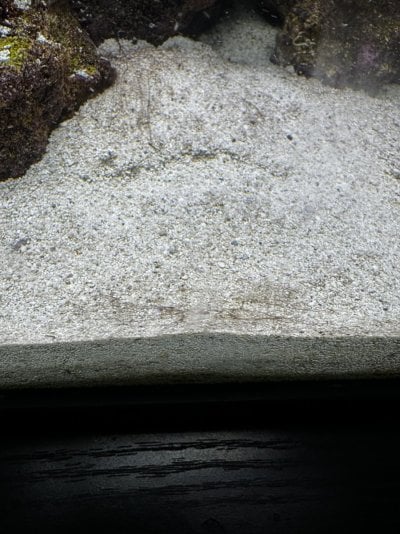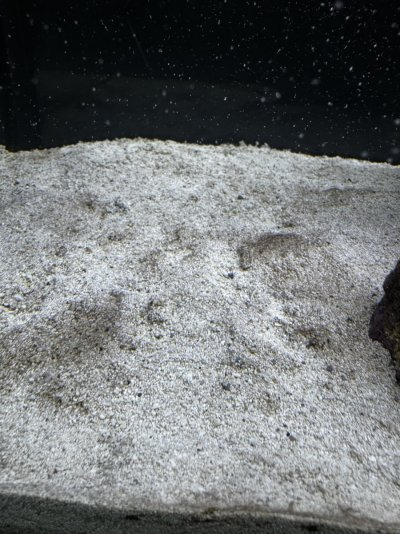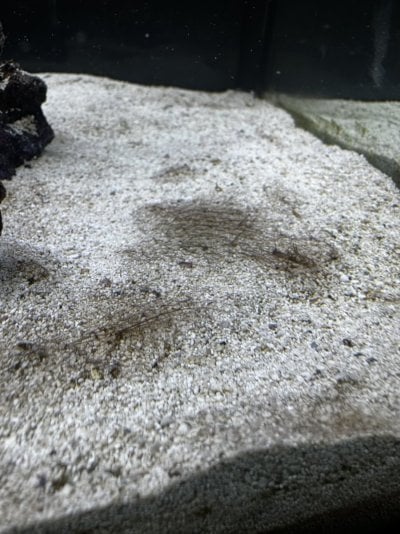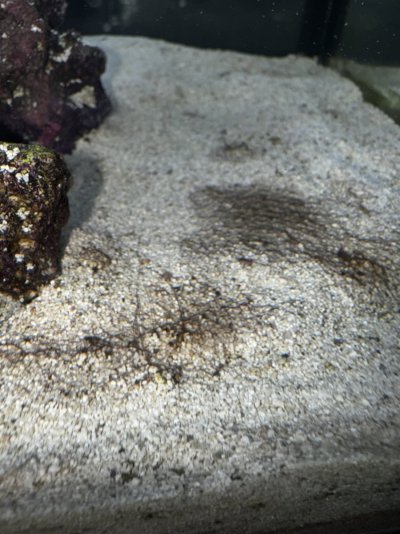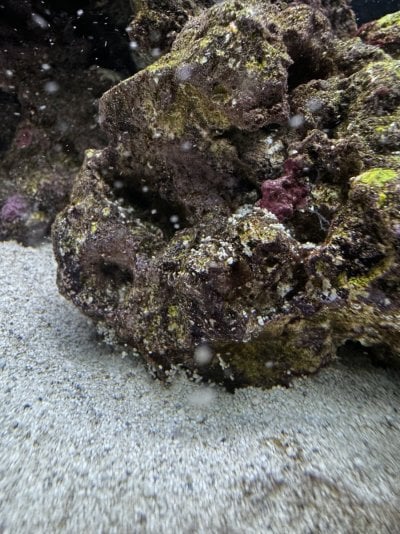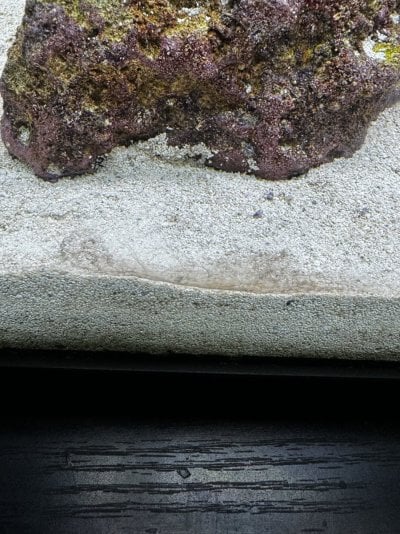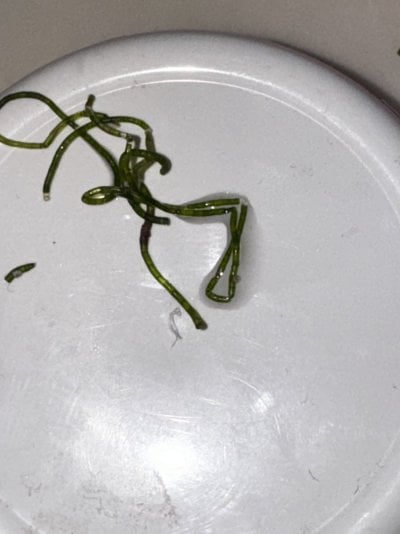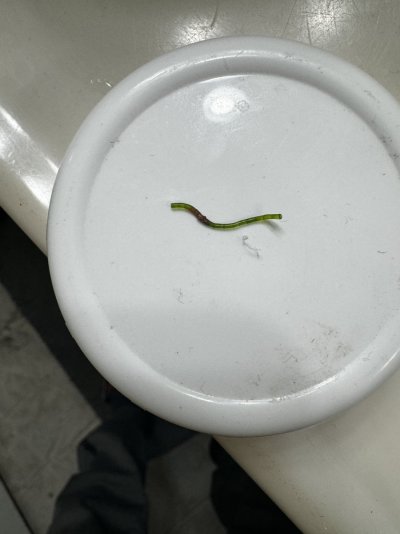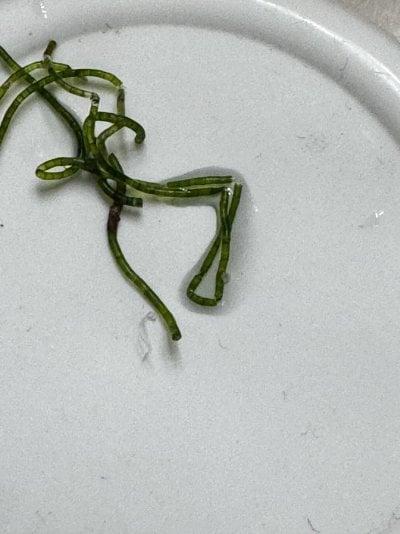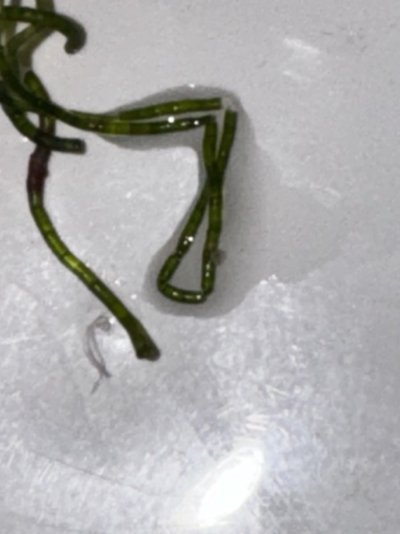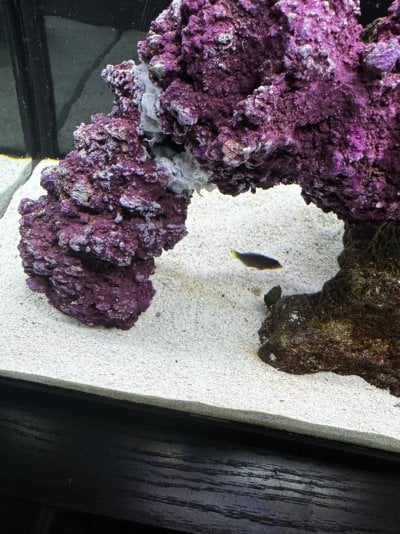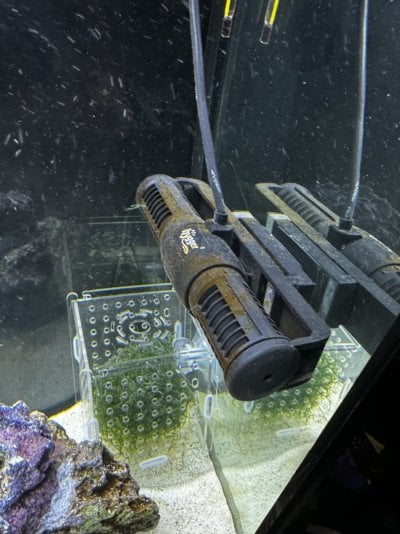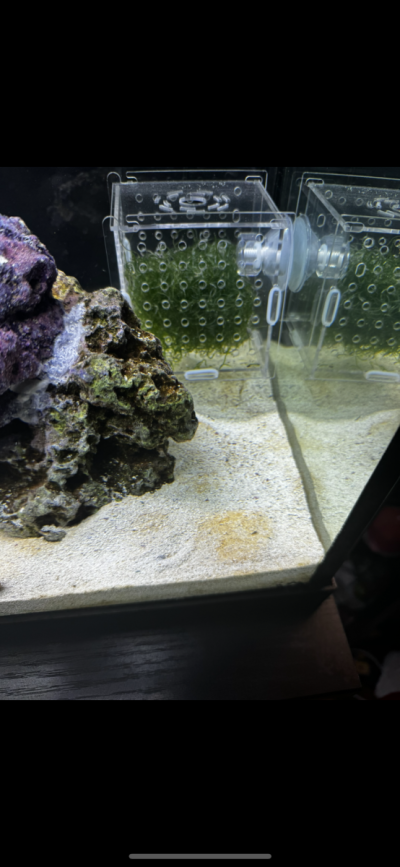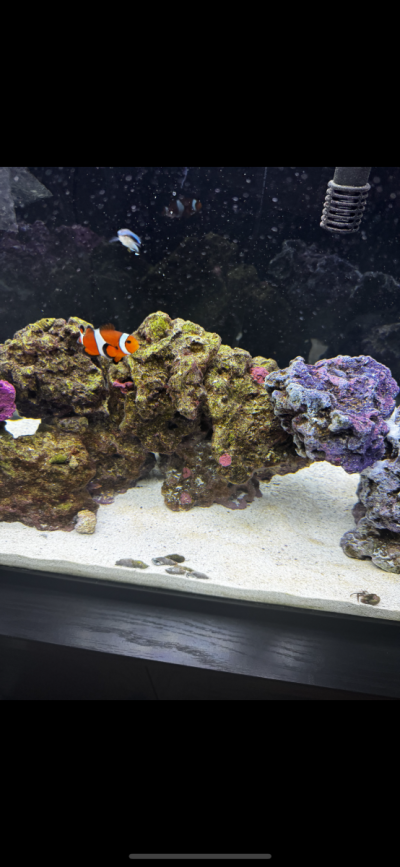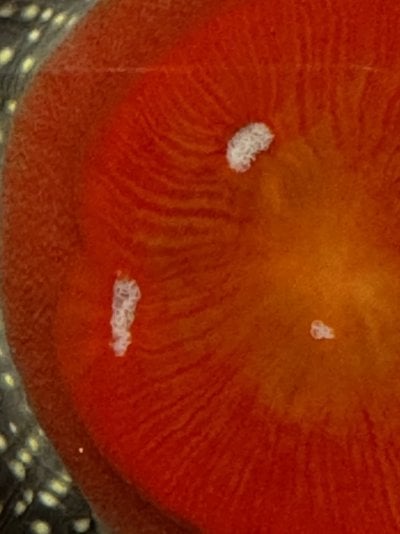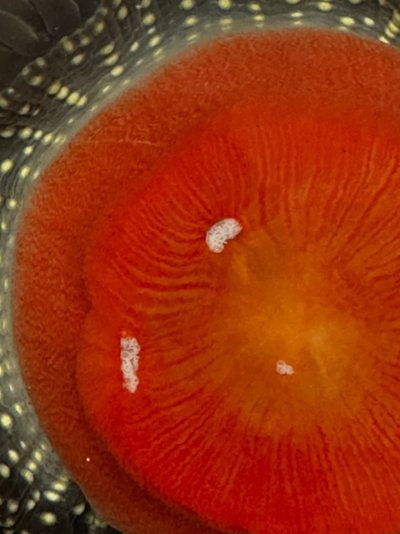Navigation
Install the app
How to install the app on iOS
Follow along with the video below to see how to install our site as a web app on your home screen.
Note: This feature may not be available in some browsers.
More options
You are using an out of date browser. It may not display this or other websites correctly.
You should upgrade or use an alternative browser.
You should upgrade or use an alternative browser.
Algae/Bacteria id
- Thread starter Linoss17
- Start date
- Tagged users vetteguy53081Randy Holmes-Farley
vetteguy53081
Well known Member and monster tank lover
View Badges
Partner Member 2024
Excellence Award
Reef Tank 365
RGB
Article Contributor
Tampa Bay Reef Keepers
West Palm Beach Reefer
Hospitality Award
Ocala Reef Club Member
305 Reef Club
Wisco Reefers
Midwest Reefer
Fish Medic
MAC of SW Florida
Rock Pool Reef Keepers
R2R Secret Santa 2023
My Tank Thread
My Aquarium Showcase
Agree on Cyano. While this is a mild case, cyano blooms typically start when water nutrient concentrations of phosphate, nitrate and other organic compounds are too high.
Some of the most common causes include:
- Protein skimmer which fills water with tiny air bubbles. As bubbles form from the reaction chamber, dissolved organic compound molecules stick to them. Foam forms at the surface of the water and is then transferred to a collection cup, where it rests as skimmate. When the protein skimmer does not output the best efficiency or you do not have the suitable protein skimmer to cover the tank, the air bubbles created by the skimmer might be insufficient. And this insufficiency of air bubbles can trigger the cyano to thrive.
- Overstocking / overfeeding, your aquarium with nutrients is often the culprit of a cyano bloom
- Adding live rock that isn’t completely cured which acts like a breeding ground for red slime algae
- If you don’t change your water with enough frequency, you’ll soon have a brightly colored red slime algae bloom. Regular water changes dilute nutrients that feed cyanobacteria and keeps your tank clear
- Using a water source with nitrates or phosphates is like rolling out the welcome mat for cyano. Tap water is an example
- Inadequate water flow, or movement, is a leading cause of cyano blooms. Slow moving water combined with excess dissolved nutrients is a recipe for pervasive red slime algae development which may be the case with this tank
Should this become worse, I recommend to reducing white light intensity or even turn them off for 3-5 days. Add liquid bacteria daily for a week during the day at 1.5ml per 10 gallons. Add Hydrogen peroxide at night at 1ml per 10 gallons. Add a pouch of chemipure Elite which will balance phos and nitrate and keep them in check.
After the 5 days, add a few snails such as cerith, margarita, astrea and nassarius plus 6-8 blue leg hermits to take control.
Agree on Cyano. While this is a mild case, cyano blooms typically start when water nutrient concentrations of phosphate, nitrate and other organic compounds are too high.
Some of the most common causes include:
- Protein skimmer which fills water with tiny air bubbles. As bubbles form from the reaction chamber, dissolved organic compound molecules stick to them. Foam forms at the surface of the water and is then transferred to a collection cup, where it rests as skimmate. When the protein skimmer does not output the best efficiency or you do not have the suitable protein skimmer to cover the tank, the air bubbles created by the skimmer might be insufficient. And this insufficiency of air bubbles can trigger the cyano to thrive.
- Overstocking / overfeeding, your aquarium with nutrients is often the culprit of a cyano bloom
- Adding live rock that isn’t completely cured which acts like a breeding ground for red slime algae
- If you don’t change your water with enough frequency, you’ll soon have a brightly colored red slime algae bloom. Regular water changes dilute nutrients that feed cyanobacteria and keeps your tank clear
- Using a water source with nitrates or phosphates is like rolling out the welcome mat for cyano. Tap water is an example
- Inadequate water flow, or movement, is a leading cause of cyano blooms. Slow moving water combined with excess dissolved nutrients is a recipe for pervasive red slime algae development which may be the case with this tank
Should this become worse, I recommend to reducing white light intensity or even turn them off for 3-5 days. Add liquid bacteria daily for a week during the day at 1.5ml per 10 gallons. Add Hydrogen peroxide at night at 1ml per 10 gallons. Add a pouch of chemipure Elite which will balance phos and nitrate and keep them in check.
After the 5 days, add a few snails such as cerith, margarita, astrea and nassarius plus 6-8 blue leg hermits to take control.
I bought some chaeto the other day and I found some white hard dots almost like sand on it and it’s hard to take it off. It also had some purple/brown hard pigment on it like if it were coralline algae. Is this a type of bacteria or pests? Have you guys encountered it before?
Attachments
vetteguy53081
Well known Member and monster tank lover
View Badges
Partner Member 2024
Excellence Award
Reef Tank 365
RGB
Article Contributor
Tampa Bay Reef Keepers
West Palm Beach Reefer
Hospitality Award
Ocala Reef Club Member
305 Reef Club
Wisco Reefers
Midwest Reefer
Fish Medic
MAC of SW Florida
Rock Pool Reef Keepers
R2R Secret Santa 2023
My Tank Thread
My Aquarium Showcase
Hard to see in the pics but may be spirobid worms which feed on algaeI bought some chaeto the other day and I found some white hard dots almost like sand on it and it’s hard to take it off. It also had some purple/brown hard pigment on it like if it were coralline algae. Is this a type of bacteria or pests? Have you guys encountered it before?
I’ve added algae barn galaxy pods recently to the tank, as well as dosing phytoplankton to the tank and everytime I add phytoplankton I see these orange brown spots appear around the tank it’ll usually go away but one spot of the tank near the wave make it’ll stay even after the rest of the tank clears up. Would you happen to know what that orange stuff is?Hard to see in the pics but may be spirobid worms which feed on algae
Attachments
vetteguy53081
Well known Member and monster tank lover
View Badges
Partner Member 2024
Excellence Award
Reef Tank 365
RGB
Article Contributor
Tampa Bay Reef Keepers
West Palm Beach Reefer
Hospitality Award
Ocala Reef Club Member
305 Reef Club
Wisco Reefers
Midwest Reefer
Fish Medic
MAC of SW Florida
Rock Pool Reef Keepers
R2R Secret Santa 2023
My Tank Thread
My Aquarium Showcase
Looks like diatoms and easily wiped away with a sponge. The top will have it only as it faces the lightI’ve added algae barn galaxy pods recently to the tank, as well as dosing phytoplankton to the tank and everytime I add phytoplankton I see these orange brown spots appear around the tank it’ll usually go away but one spot of the tank near the wave make it’ll stay even after the rest of the tank clears up. Would you happen to know what that orange stuff is?
I recently purchased a long tentacle anemone and this stringy stuff is attached the anemones foot. Do you know what this could be?Looks like diatoms and easily wiped away with a sponge. The top will have it only as it faces the light
Attachments
vetteguy53081
Well known Member and monster tank lover
View Badges
Partner Member 2024
Excellence Award
Reef Tank 365
RGB
Article Contributor
Tampa Bay Reef Keepers
West Palm Beach Reefer
Hospitality Award
Ocala Reef Club Member
305 Reef Club
Wisco Reefers
Midwest Reefer
Fish Medic
MAC of SW Florida
Rock Pool Reef Keepers
R2R Secret Santa 2023
My Tank Thread
My Aquarium Showcase
Looks like expelled food or zooxanthellae which results from over feeding or too much light. Also high phosphateI recently purchased a long tentacle anemone and this stringy stuff is attached the anemones foot. Do you know what this could be?
Similar threads
- Replies
- 4
- Views
- 107


